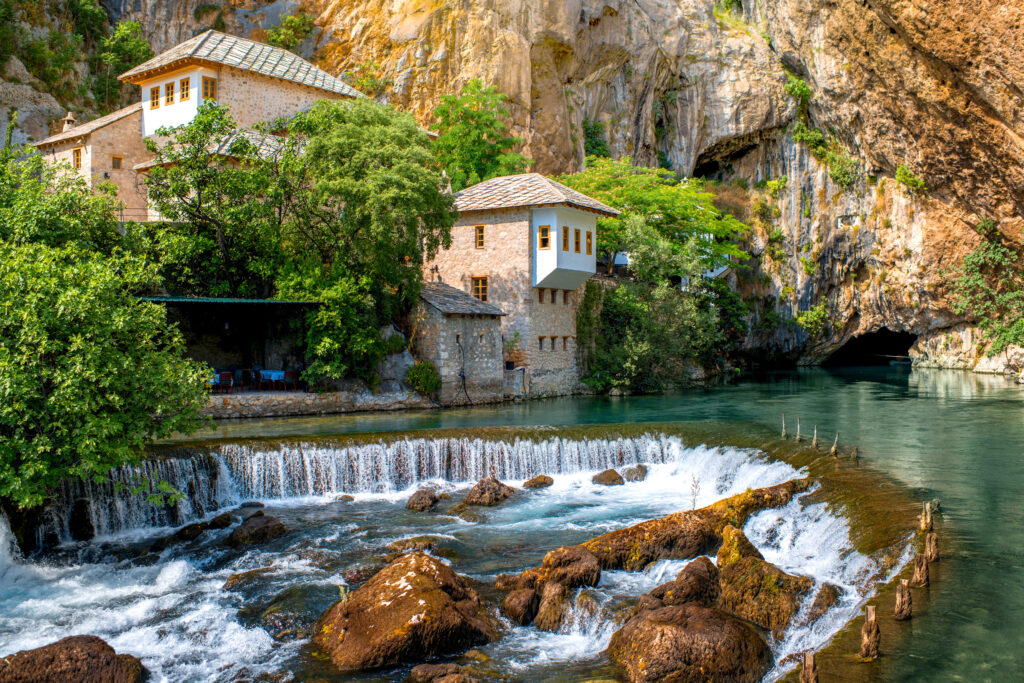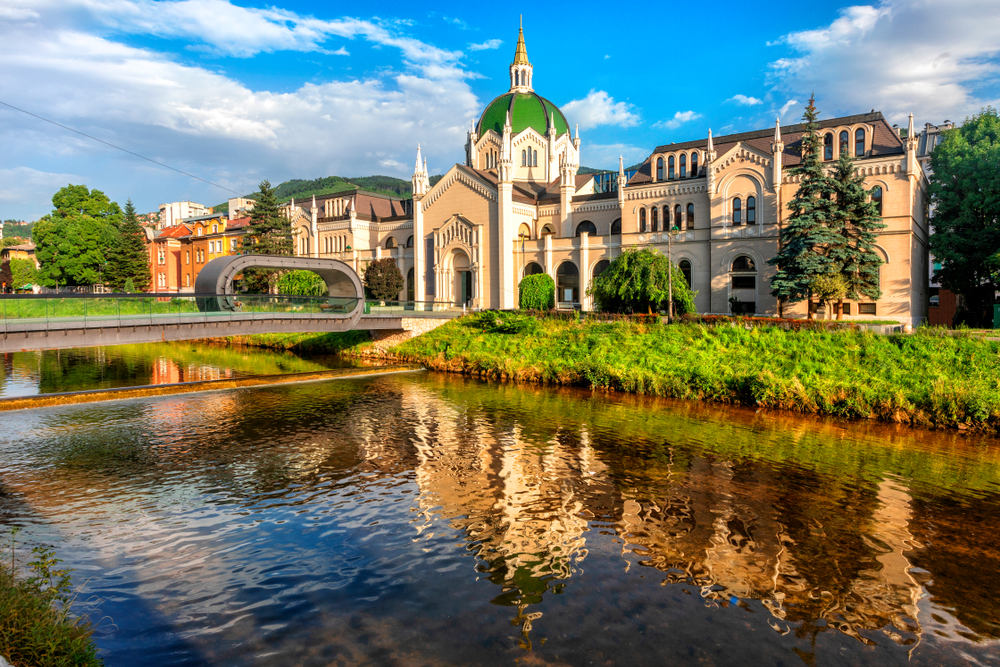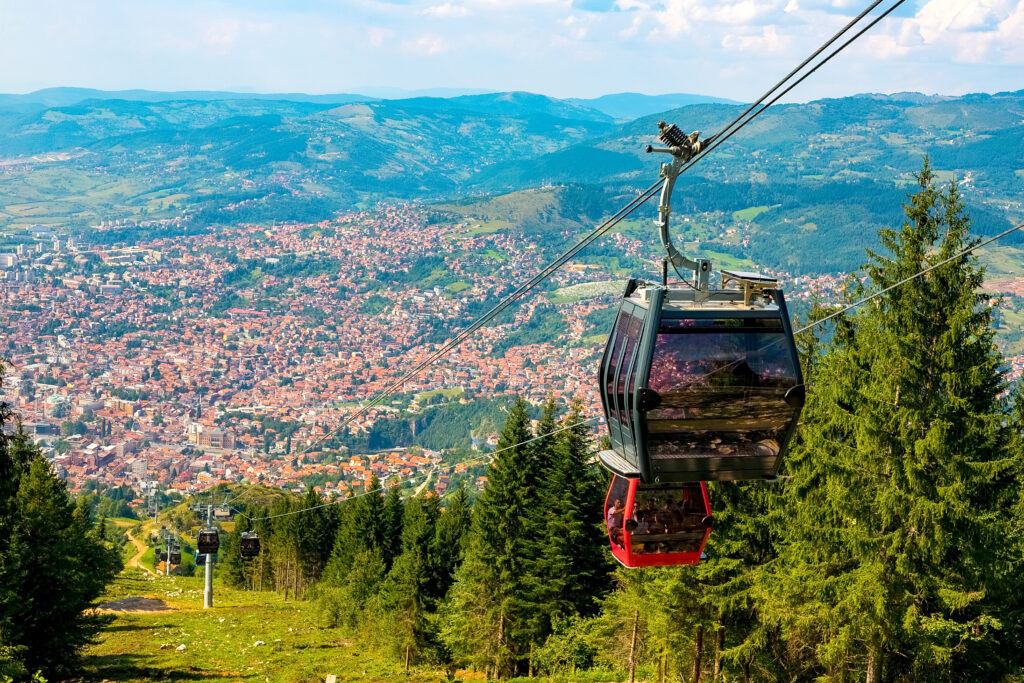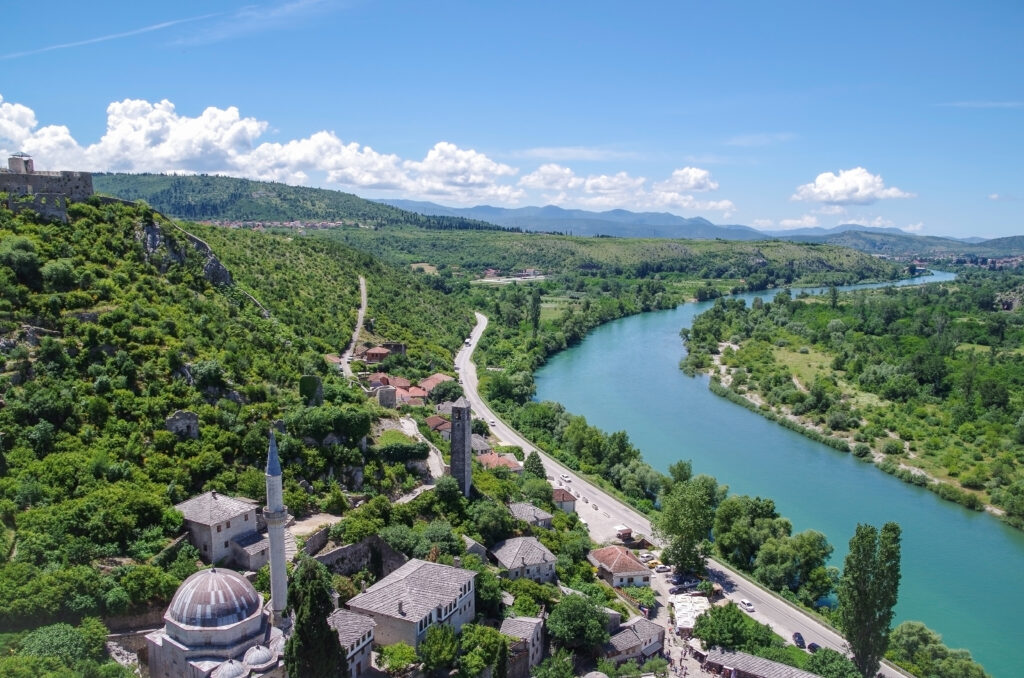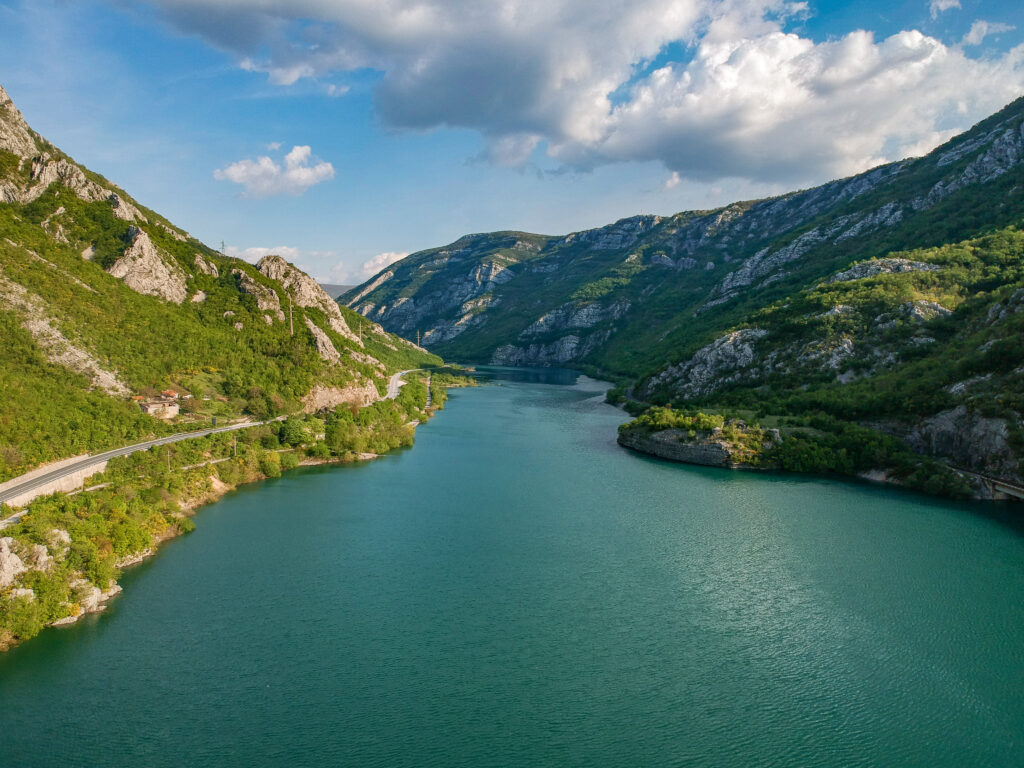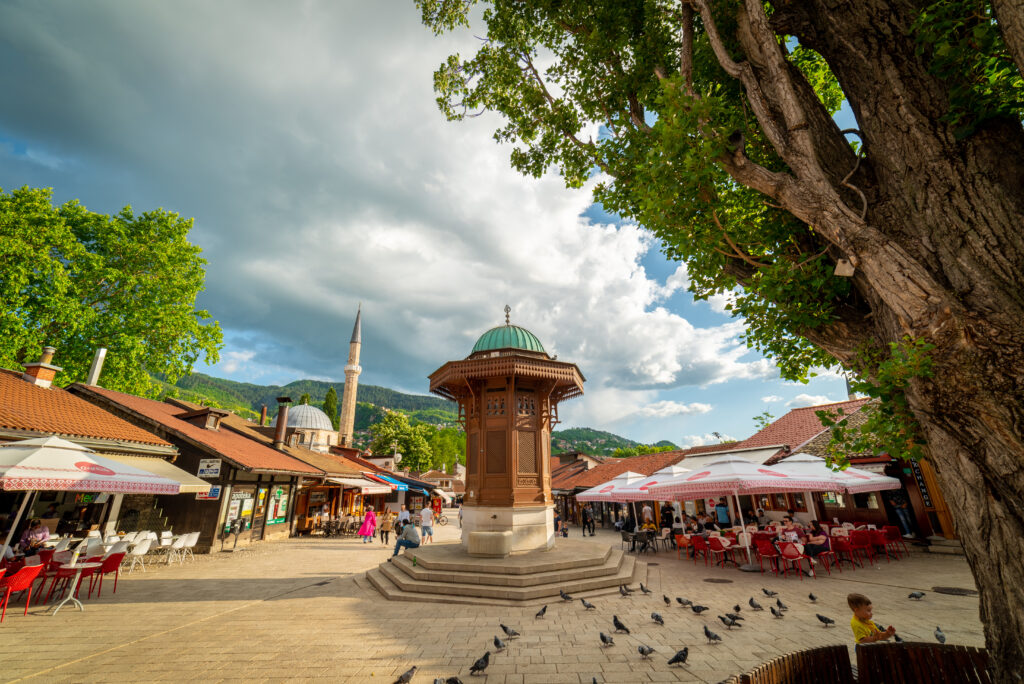- 3
- 3
- 4
Mostar
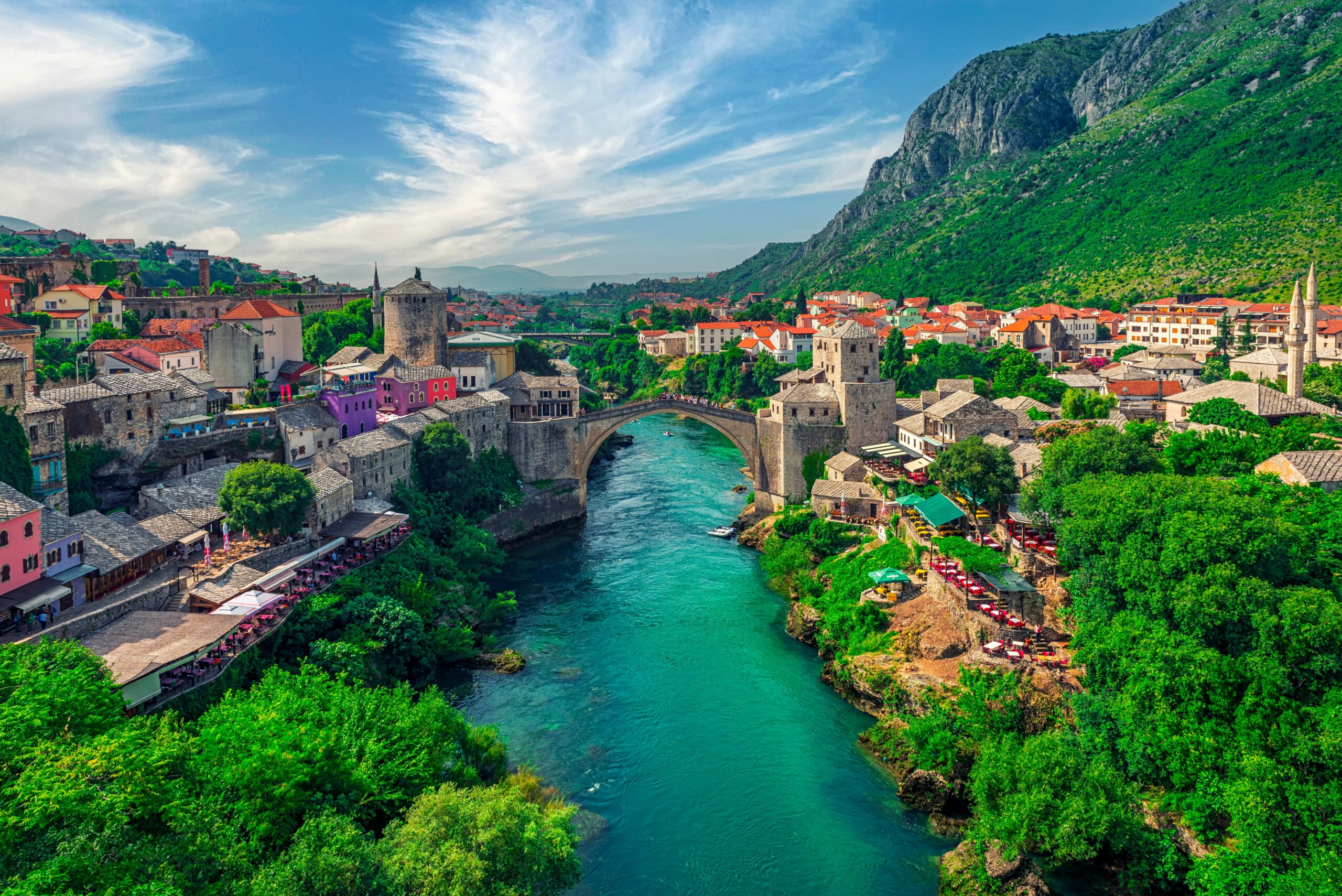
Mostar is the chief city and, historically, the capital of Herzegovina. It is situated in mountainous country along the Neretva River and lies on the Sarajevo-Ploče rail line.
A settlement established as an urban structure in the 15th century on the crossing of a river and a land road was originally located in a valley of the Neretva River, between Hum Hill and the foot of the Velež Mountain. This relatively small settlement had two towers around the bridge, dating from 1459, as noted by written historical sources. The current name, Mostar, was mentioned for the first time in 1474 and is derived from “mostari,” the bridge keepers. The historic town of Mostar developed in the 15th and 16th centuries as an Ottoman frontier town and during the short Austro-Hungarian period in the 19th and 20th centuries. Mostar has been long known for its old Turkish houses and the Old Bridge (Stari Most), an extraordinary technological achievement in bridge construction. The historic part of Mostar is a result of the interaction between natural phenomena and human creativity throughout a long historical period.
Kravica Waterfalls
Kravica waterfall is a beautiful natural landmark located near Mostar, Bosnia and Herzegovina. Kravica Nature Park is a popular tourist destination thanks to the amazing waterfall that’s over 25 meters high.
The Kravice waterfalls, originally known as the Kravica waterfalls, are one of the most beautiful natural sites in the Herzegovinian region of Bosnia and Herzegovina. Located on the Trebižat river, it cascades off a particularly large tuff limestone deposit and onto the lake below. The entire area is protected by the state government, but it is open to the local public and tourists for visits, picnics, camping, and even swimming. The entire area is full of greenery, with chaste trees, poplars, and figs all around. Even the tuff formations are green, with thick lichen, moss, and grass all over them. There are hardly any manmade formations near the falls to interfere with the location’s complete natural environment. The Kravice waterfalls are a serene natural sight to behold, but there are also the added attractions of camping, swimming, and even a small café for people to just sit, chat, and enjoy the general beauty of the place. If you are there in the summer, you can opt for rafting, which is quite popular at that time.
Buna River Blagaj
The source of the Buna River is one of the largest and most beautiful in Europe. The Buna River is the finest example of an underground karst river.
The Buna flows west for approximately 9 km, starting at Blagaj and meandering through the villages of Blagaj, Kosor, Malo Polje, and Hodbina, and joining the Neretva at Buna village. The Bunica River is the main left-bank tributary of the Buna. The spring flows out of a rock face 15 meters wide, and skin-divers who have seen the grotto underneath it have discovered that the underground current of the spring continues inside for 200 meters. Its waters, particularly cold and clean, are full of precious trout, endemic to streams.
Old Town Mostar
The Old Bridge Area, with its pre-Ottoman, Eastern Ottoman, Mediterranean, and Western European architectural features, is an outstanding example of a multicultural urban settlement.
The Old City of Mostar, shaped and defined during the Medieval, Ottoman, and Austro-Hungarian periods, preserved its coherence as a whole with recognizable features of the townscape and legibility in an urban-morphological matrix without introducing alterations in the form of new or inappropriately renewed structures. With the “renaissance” of the Old Bridge and its surroundings, the symbolic power and meaning of the City of Mostar—as an exceptional and universal symbol of the coexistence of communities from diverse cultural, ethnic, and religious backgrounds—have been reinforced and strengthened, underscoring the unlimited efforts of human solidarity for peace and powerful cooperation in the face of overwhelming catastrophes.
Počitelj
It is a historical village and open-air museum in Bosnia and Herzegovina. The village is located on the left bank of the Neretva River, on the main road Mostar-Metkovic, about 30 km south of Mostar.
Bučetli, with its attractive oriental style, is located about half an hour’s drive from Mostar, south towards the Adriatic Sea. This unique village, listed as a UNESCO heritage site, is a historical village. It was first mentioned in 1444, but some documents show that it It was built in the late 14th century on the order of the Bosnian King Tvrtko. In addition to its stunning oriental architecture and Ottoman character, Buccetelli hosts the longest art colony in southeastern Europe, where artists from all over the world come together to paint the bright red pomegranates and figs that grow in abundance on its hills. The most striking feature of this village is the Clock Tower, a hermitage-shaped fortress positioned high on the hill above the town, which housed guards and soldiers to protect the area from possible invasion from the Neretva Valley.

